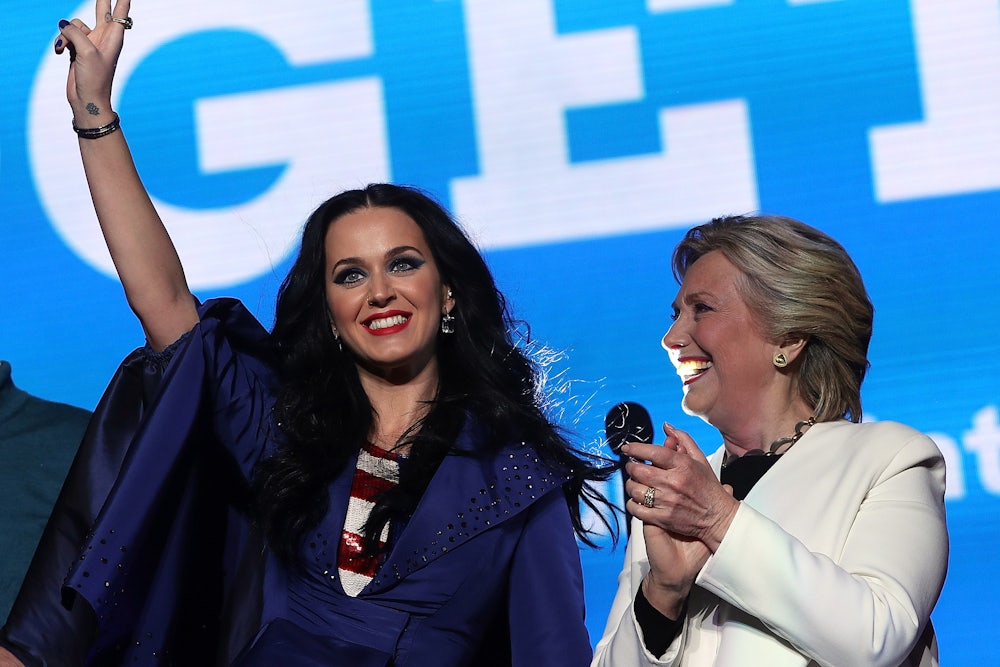Hillary Clinton will not be our first woman president, a symbolic blow made more painful by the fact that she lost to a raging misogynist and sexual predator. Donald Trump is now set to preside over a unified Republican government deeply antagonistic to abortion rights, marriage equality, and healthcare access. This will almost certainly be disastrous for women, but according to exit polls, 53 percent of white women voted for him anyway.
That’s a departure from pre-election polls, which showed her winning this demographic, but there long have been signs that white women wouldn’t flock to Clinton despite the historic nature of her candidacy. In May, The Atlantic’s Ronald Brownstein argued that Trump needed white women to beat Clinton—and that he might very well win those votes:
Democrats haven’t done nearly as well among white women. In modern exit polling tracing back to 1972, the only Democrat to win more white women than his Republican opponent was Bill Clinton in 1996. Clinton in 1992 and Al Gore in 2000 also ran about even with white women. But since then, the GOP has carried white women by solid margins: 11 points in 2004, seven in 2008, and fully 14 for Mitt Romney against Obama in 2012.
Trump’s “grab them by the pussy” tape, the sexual assault and harassment allegations against him, and his selection of anti-abortion, anti-LGBT Indiana Governor Mike Pence as his running mate all bothered college-educated white women, but not their working class peers. White women without college degrees—an educational status correlated to lower income—overwhelmingly supported Trump, enough so that he won white women as a category.
That did not have to happen. But the Democratic Party for years has packaged superficial progressivism as real social justice, and the Clinton campaign’s simpering celebrity feminism ultimately proved tone deaf to the vital women voters who were more concerned about their pocketbook than “grab them by the pussy.”
White working class voters aren’t necessarily committed Republicans. As New York magazine reported Wednesday, many had voted for Obama. And there’s evidence they still feel warmly about our sitting president, who has a national approval rating of 56 percent. That’s a startling contrast with Clinton’s approval rating, which dropped to 38 percent in August and hovered around 41 percent in late October. Trump’s approval ratings have been little better, but he still managed to turn out voters. Clinton, meanwhile, suffered from the enthusiasm gap many had warned about for months.
Clinton’s campaign strategy, especially when it came to appealing to white women, indicates that she and her staffers didn’t quite grasp these dynamics. Her campaign employed a candy-colored brand of female empowerment seemingly based on the assumption that white women’s political priorities are influenced by the pop culture they consume. White working-class women weren’t going to vote for Clinton just because Lady Gaga, Katy Perry, Lena Dunham, and Sheryl Sandberg were.
These celebrity overtures were out of step with the priorities and concerns of white working-class women. How can you “lean in,” as Sandberg implores working women to do, when it’ll cost you your minimum-wage job? And if you can’t afford HBO, how likely is it you even know who Lena Dunham is, much less care about her political opinions?
Yet Clinton’s campaign relied heavily on these endorsement gimmicks. It saturated its messaging with the same superficial celebrity feminism that anoints everyone from Taylor Swift to Madeline Albright as role models for would-be girl bosses. It assumed that this branding, and Clinton’s bid to make history, would be enough to attract the white women she needed to win. Not only did this tactic fail in that regard, but it alienated some queer women, women of color, and even millennials.
Clinton and her staffers should have anticipated this outcome. Breaking glass ceilings doesn’t feed families. Progressive policies will. Though Clinton’s platform was inarguably more progressive than Trump’s, she failed to communicate those policies to the voters who needed to hear it most. Instead, she focused on girl-power anthems and cultivated wealthy celebrity surrogates who were incapable of addressing the grievances that fueled Trump’s campaign.
The Democratic National Committee shares some blame in this. The Podesta emails showed that the DNC is currently run by a tight-knit inner circle committed to the very incrementalism voters rejected Tuesday night. In an anti-establishment year, it promoted a progressivism defined by social liberalism and little else. It balked at adopting popular economic reforms, like a $15 minimum wage and free college tuition. It backed moderates like Katie McGinty. Meanwhile, the party’s historical base has moved on without it: Trump didn’t just split white women. He split union voters, too.
It’s possible that white working-class women wouldn’t have rallied to any Democrat this year. But Clinton’s campaign strategies didn’t help her, and couldn’t make up for the DNC’s decision to abandon progressive populism decades ago. An intact working-class base would have made the DNC less reliant on the whims of one fragment of the women’s vote—and they would have kept at least some of the white working-class women they lost to Trump. This political work must go on outside the election cycle, and it’s certainly not going to be accomplished with parody ads starring Lena Dunham.
